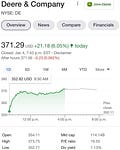Welcome to the 99th Edition of Upstream Ag Insights and the 1st Edition of 2022!
Moving ahead I will be trying some new ways to share Upstream. I have primarily written, but have been wanting to do some more audio and video. To start, each week I will link to a YouTube video where I talk about three of my favourite events and thoughts from the week. If y…

